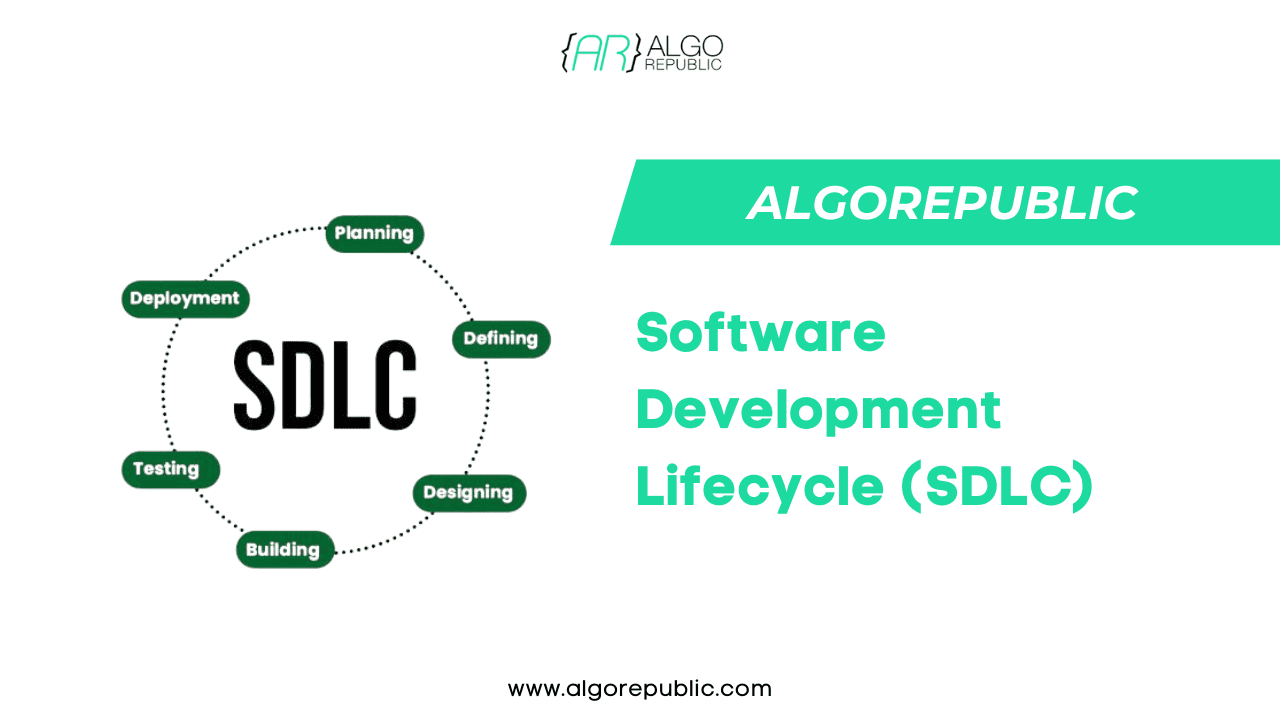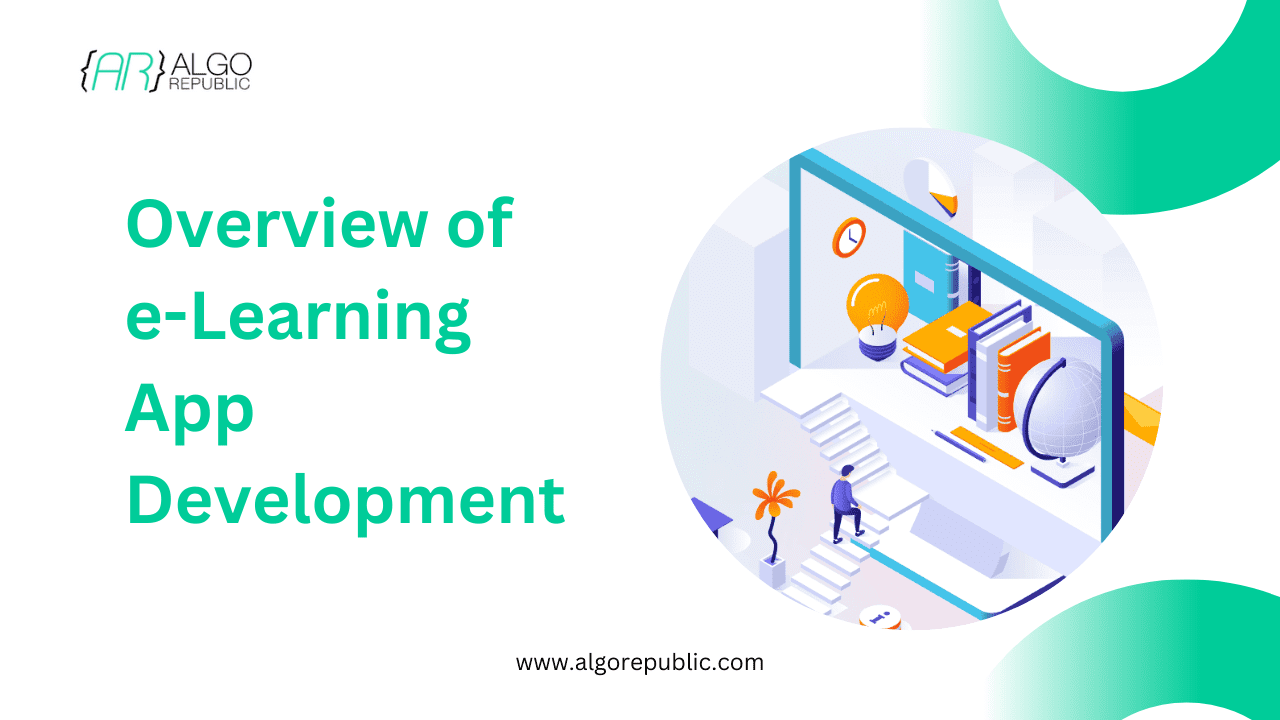Table of Contents
Within the software engineering world, Software Development Lifecycle (SDLC) forms an essential framework for designing, launching and upholding software applications.
This blog will explore what SDLC includes along with its significance in managing development projects of all kinds. It further examines how it works while focusing on security measures adopted by this method as compared to other lifecycle management approaches. Additionally, we uncover AWS’s role in fulfilling the requirements necessary for smooth implementation of SDLC processes
The idea behind Software Development Lifecycle (SDLC)
Software development lifecycle or SDLC offers a perfect way to create, test, deploy and maintain software applications with a structured approach. This process allows for perfect completion of projects within a preferred timeframe and budget constraints. By following the SDLC approach, it offers a systematic method towards successful software development lifecycle.
What is the significance of SDLC?
There are several reasons why SDLC plays an integral part in the success of software projects:
Structured approach: The SDLC is based on a structured approach that facilitates the systematic management of software development lifecycle projects, fostering enhanced organization and efficiency.
Risk management: SDLC allows teams to identify and minimize risks at every stage by dividing the development process into specific phases.
Quality assurance: The SDLC prioritizes meticulous testing and validation processes to guarantee that software conforms with both the quality standards set in place and user expectations.
Cost and time efficiency: SDLC ensures cost and time efficiency by adhering to a set process, which effectively manages expenses and schedules. As a result, hindrances or financial overruns are avoided.
Stakeholder collaboration: Collaboration among stakeholders, such as developers, designers, testers and clients is encouraged by SDLC. This promotes transparency and communication during the entire project lifecycle.
What is the Working Mechanism of SDLC?
The phases typically involved in the SDLC are as follows:
Plan: Establish project boundaries, goals, specifications and schedules.
Analysis: The process of gathering and analyzing user needs and system prerequisites is called analysis.
Design: Create a comprehensive blueprint that represents the system’s architecture, modules and interfaces – design.
Implementation: The process of Implementation involves carrying out coding and integrating software components in accordance with the specified design requirements.
Testing: Perform a range of testing routines, such as unit tests, integration tests and user acceptance assessments in order to assure the effectiveness and proficiency of software.
Deployment: Deploy the software to production environments and deliver user training and assistance.
Maintenance: Maintaining the software requires careful monitoring, regular updates and effective enhancements to resolve bugs, address issues and meet changing user requirements.
What are SDLC Models?
Software Development Life Cycle (SDLC) models provide a structured approach to software development. They outline the phases and processes involved in creating, deploying, and maintaining software applications. Different models cater to various project requirements, team dynamics, and stakeholder expectations. Here, we will explore some of the most commonly used SDLC models:
1. Waterfall Model
The Waterfall model is one of the earliest and most traditional SDLC models. It follows a linear and sequential approach, where each phase must be completed before the next one begins.
Key Points:
- Phases: Requirement analysis, system design, implementation, testing, deployment, and maintenance.
- Predictability: Each phase has specific deliverables and a review process, making it easier to predict timelines and budgets.
- Documentation: Emphasizes comprehensive documentation at every stage.
- Limitations: Limited flexibility to accommodate changes once a phase is completed.
2. V-Model (Verification and Validation)
The V-Model, also known as the Validation and Verification model, is an extension of the Waterfall model. It emphasizes parallel testing activities corresponding to each development stage.
Key Points:
Phases: Requirement analysis, system design, architecture design, module design, coding, unit testing, integration testing, system testing, and acceptance testing.
Testing Parallelism: Each development phase has a corresponding testing phase, ensuring early detection of defects.
Structured Approach: Follows a strict sequential process similar to the Waterfall model.
Limitations: Like Waterfall, it can be rigid and less adaptable to changes.
3. Iterative Model
The Iterative model breaks down the software development process into smaller, manageable iterations. Each iteration involves a mini-waterfall process, including planning, design, implementation, and testing.
Key Points:
Phases: Multiple iterations of planning, design, implementation, and testing.
Feedback Integration: Allows incorporating feedback and making improvements with each iteration.
Risk Management: Early iterations help identify and mitigate risks.
Limitations: Can be resource-intensive and may require significant management oversight.
4. Spiral Model
Overview:
The Spiral model combines iterative development with systematic risk management. It focuses on risk analysis and mitigation at each phase of the development cycle.
Key Points:
Phases: Planning, risk analysis, engineering, and evaluation.
Risk Focus: Emphasizes identifying and mitigating risks early in the development process.
Flexibility: Allows for iterative refinement based on feedback and risk assessment.
Limitations: Can be complex and costly due to extensive risk management activities.
5. Agile Model
Overview:
The Agile model promotes iterative development, collaboration, and flexibility. It emphasizes delivering small, functional increments of software and incorporating feedback continuously.
Key Points:
Phases: Iterations of planning, design, coding, testing, and deployment.
Collaboration: Involves close collaboration between cross-functional teams and stakeholders.
Adaptability: Highly adaptable to changing requirements and user feedback.
Limitations: Requires experienced team members and active stakeholder involvement.
6. Scrum
Overview:
Scrum is an Agile framework that focuses on iterative development through fixed-length iterations called sprints, typically lasting two to four weeks.
Key Points:
Phases: Sprint planning, daily stand-ups, sprint review, and sprint retrospective.
Roles: Defined roles such as Scrum Master, Product Owner, and Development Team.
Artifacts: Uses artifacts like the product backlog, sprint backlog, and increment.
Limitations: Can be challenging to scale for large projects or teams.
7. Kanban
Overview:
Kanban is an Agile methodology that uses visual boards to manage and prioritize tasks. It focuses on continuous delivery and optimizing workflow efficiency.
Key Points:
Phases: No fixed phases; continuous flow of work items.
Visual Management: Uses Kanban boards to visualize work and manage flow.
Flexibility: Adaptable and easy to implement alongside existing processes.
Limitations: Less prescriptive, which can lead to inconsistency without proper guidance.
8. Lean
Overview:
Lean methodology focuses on optimizing efficiency by eliminating waste, improving quality, and delivering value to the customer.
Key Points:
Phases: Continuous improvement cycle of plan, do, check, act (PDCA).
Value Stream Mapping: Identifies and eliminates non-value-adding activities.
Customer Focus: Prioritizes customer needs and delivering value.
Limitations: Requires a cultural shift and commitment to continuous improvement.
9. DevOps
Overview:
DevOps integrates software development (Dev) and IT operations (Ops) to improve collaboration, automate processes, and accelerate delivery.
Key Points:
Phases: Continuous development, integration, testing, deployment, and monitoring.
Automation: Emphasizes automation of build, test, and deployment processes.
Collaboration: Fosters collaboration between development and operations teams.
Limitations: Requires cultural and organizational changes for successful implementation.
10. RAD (Rapid Application Development)
Overview:
RAD emphasizes rapid prototyping and iterative delivery with minimal planning, aiming to develop applications quickly.
Key Points:
Phases: Requirements planning, user design, construction, and cutover.
Prototyping: Uses prototypes to gather feedback and refine requirements.
Speed: Focuses on quickly delivering functional software.
Limitations: May sacrifice quality for speed if not managed properly.
11. Extreme Programming (XP)
Overview:
XP is an Agile methodology that promotes high-quality software through frequent releases, continuous feedback, and a focus on technical excellence.
Key Points:
Phases: Planning, designing, coding, testing, and listening.
Practices: Includes practices like pair programming, test-driven development, and continuous integration.
Quality: Emphasizes code quality and customer satisfaction.
Limitations: Requires a high level of discipline and skilled team members.
In what way does SDLC tackle security?
Addressing security is crucial in SDLC, and it can be accomplished through the implementation of the following measures:
Risk assessment: It is important to carry out risk assessment especially during the planning and analysis stages. This helps to identify potential security vulnerabilities and threats.
Secure coding practices: Utilization of secure coding practices and instructions to bring down the risks related to vulnerabilities such as SQL injection, cross-site scripting and buffer overflows.
Routinely security testing: It helps by conducting routine security processes including code reviews and penetration testing to identify and resolve any bugs in the system.
Standard compliance: The prime goal is to keep industry standards and regulations well in consideration in order to secure sensitive information and keep up with regulatory compliance. Some of these can be GDPR, HIPAA or ISO 27001 etc.
SDLC vs other lifecycle management methodologies
Alongside SDLC being highly utilized as a methodology, there are alternative approaches to lifecycle management that include Agile, Waterfall, and DevOps. Below is a comparison of how SDLC measures up against these methodologies:
Agile: Agile prioritizes iterative development, collaboration, and flexibility which enables rapid adjustments to changing requirements. Conversely, SDLC adheres to a more orderly and systematic process.
Waterfall: The waterfall approach moves ahead with a step-by-step manner. Each stage is finished first before moving onto the next one. Whereas, SDLC allows for greater adaptability and repetition during the development process.
DevOps: DevOps is known to be more of a collaborative approach that brings together the development and operational teams with a core focus on automation. Where SDLC covers only the coding part mainly, DevOps provides support for infrastructure and operational parts as well.
AWS for SDLC requirements
AWS provides a collection of cloud-based services and solutions that can facilitate multiple aspects of the Software Development LifeCycle (SDLC), addressing it in its entirety.
Compute: One can calculate their computing needs through AWS, which offers flexible application development and deployment capabilities with services like Amazon EC2.
Storage: AWS provides secure and flexible storage options, such as Amazon S3 and Amazon EBS, that can be used for storing application data as well as resources.
Database: AWS has managed database solutions such as Amazon RDS, Amazon dynamoDB, which makes it easiest to manage and scale databases as required.
Development tools: AWS has a variety of development tools and services to help version control, automated build and deployment. Some of these can be AWS codeCommit, AWS codebuild, and AWS codedeploy.
Security: AWS offers comprehensive security functionalities and adherence to compliance accreditations, such as IAM for identity and access management, encryption mechanisms, and conformity with industry-established regulations.
Organizations can optimize their SDLC processes, expedite development cycles, strengthen scalability and reliability, as well as reinforce security and compliance through the utilization of AWS services.
In conclusion, the effective management of a software development project is highly dependent on using the software development lifecycle as a base framework. Adopting a structured methodology while addressing security issues and assessing other lifecycle approaches alongside employing AWS services helps organizations optimize their development procedures for superior results in terms of quality assurance and project triumph.
Looking for the best software development lifecycles services with a structured approach for optimal outcomes? We at Algorepublic are here to help you reach your business goals faster and more efficiently.



